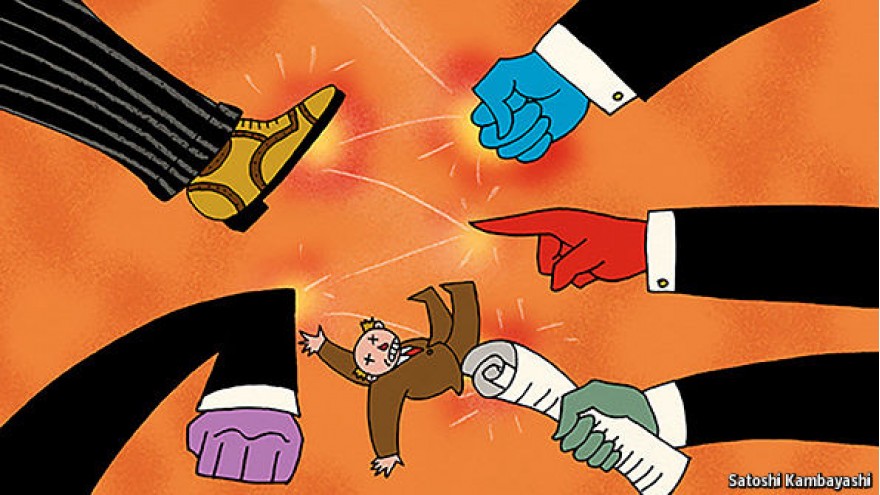No TEE thank you
The greatest gains from such incentives tend to accrue to the better-off—they have more money to save, after all. But that makes pension tax breaks a tempting target when governments are trying to balance their budgets. Britain introduced a “simple” regime for pensions tax in 2006 and successive governments have been fiddling with the rules ever since. To control the cost, governments have introduced lifetime caps on pension pots and annual limits on contributions; to encourage saving, they have brought in auto-enrolment for pension schemes and investment freedom on retirement.
HOW best to encourage people to save for their old age? Governments face many trade-offs when dealing with this issue. In the long run, they want to reduce the dependence of citizens upon the state; in the short term, they may prefer workers to consume rather than save, in order to manage the economic cycle.
Another trade-off is between cost and simplicity. Governments offer tax breaks as an incentive to save for retirement, although it’s not clear whether such inducements increase the total amount of saving or merely cause workers to reallocate their savings to tax-favoured vehicles.
The latest suggestion is the most radical yet. In a consultation paper, the British government has floated the idea of moving away from the current system (known as “exempt, exempt, taxed” or EET), in which pension contributions are exempt from tax, as are investment gains, but benefits are taxable. Instead, pension contributions would be made from taxed income, but investment gains and retirement income would be tax-free (“taxed, exempt, exempt” or TEE).
Most experts think this is a daft idea. First, more than £2 trillion ($3 trillion) of pension assets have already been accumulated under the current rules. Allowing this to be taken tax-free on retirement would be enormously costly; applying a retrospective tax to those assets would be enormously unpopular. So the EET and TEE systems would have to be run in tandem, making things even more complex.
Second, taxing pension contributions upfront would reduce the incentive to save. Workers would have to take it on trust that they would get their retirement income tax-free—in other words, that a future government would not change the rules again. But workers are unlikely to be that trusting, given all the fiddling that has already taken place. A survey by Hymans Robertson, an actuarial consultant, found that 37% of Britons are not interested in learning about pensions because government policies keep changing.
Third, allowing someone to take all their pension pot tax-free on retirement increases the risk that they will spend it too quickly. That would leave them dependent on the state, negating the point of tax incentives. Australians have the right to withdraw their pension pots at 55 as a tax-free lump sum; a report last year found that 25% of those who used that freedom had run out of money by the age of 70.
Finally, a shift from EET to TEE would result in a short-term tax windfall for the British Treasury. This may well be the primary motivation for suggesting the change. But a big effect would merely be to advance tax receipts from the future. That would surely be a strategic mistake given the ageing of Britain’s population. Two decades from now there would be a lot of tax-exempt elderly people.
All these problems explain why most countries tend to use an EET rather than a TEE approach. The puzzle is why the British government raised the issue in the first place. One possible explanation is that it actually has another aim in mind: limiting the tax relief available to higher earners, who get two-thirds of all the tax benefits. This would end up seeming like a “compromise” solution, compared with a shift to taxing contributions upfront.
Depending on the level of tax relief on offer, the government could use reform to encourage lower earners to save more, without increasing the overall cost of the system. Tax relief could be set at an effective rate of 30%, for example—a boost for taxpayers in the 20% band, but reducing the benefit to those on the 40% and 45% rates. Estonia has a system of capped tax relief for private pension contributions.
Dealing with the problem of ageing populations will not be easy. Workers must retire later and employers must adjust to an older workforce. But it also means that workers must build up a pension pot. They need confidence in government policy to encourage them to defer consumption. And that means avoiding arbitrary rule changes, like a switch to a TEE approach. One for the bin.





Comments